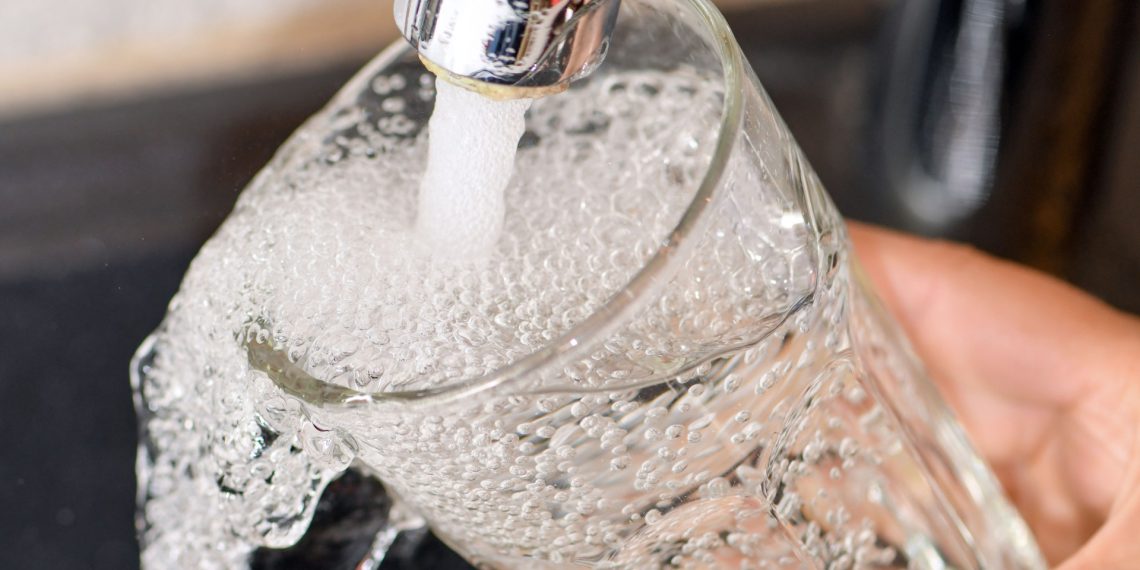No foodstuff is as strictly controlled as drinking water in German households. But if it is not handled hygienically in private households, drinking water can also spoil. TÜV SÜD provides information on how to avoid hygiene errors with drinking bottles, water filters and the like.
According to the German Nutrition Society, the body should be supplied with approximately 1.5 liters of water per day from beverages. The rest comes from water in solid food. In daycare centers, schools, offices or home offices, water should be the number one thirst quencher. In Germany, specialist institutions for healthy nutrition generally advise the use of drinking water from the tap. Unlike other countries, drinking water in Germany is not routinely disinfected with chlorine. Water suppliers chlorinate drinking water for short periods of time and within tight legal limits when pathogens may be present in drinking water.
Drinking water with grades 1 to 2
Drinking water in Germany has a very good to good quality according to the current drinking water report of the Federal Ministry of Health and the Federal Environment Agency. The microbiological and chemical quality parameters were met in more than 99 percent of the samples. Although one percent of the samples showed minor and temporary deviations from the specified maximum value, for example in the case of active ingredients from pesticides and biocides. However, the pesticide concentrations measured did not pose a health risk to consumers. Pharmaceutical residues from tap drinking water also do not give rise to any health concerns, according to the consumer association.
Drinking water hygiene at home
However, the quality of drinking water can suffer if hygienic handling is neglected in private households. Unsuitable storage, intermediate storage that is too warm, and dirty drinking vessels can quickly lead to a loss of quality and a bad taste. Suitable storage of tap water in water containers and drinking bottles is particularly important at higher outdoor temperatures.
Material for storing water
Consumers can tell whether a container is suitable for storing food and water by the “glass and fork” symbol. Drinking bottles should be shock-resistant and dishwasher-safe. Transparent bottles have proven their worth. This is because they make it easy to see whether cleaning is required. Water filters and bubblers should also store water in suitable materials.
Handling in everyday life
Stale tap water should not be consumed. Before filling the drinking vessel with water from the tap, it should therefore run out for a few seconds. Especially if no water has been drawn from the tap for a long time, the water stagnating in the house pipe may contain water bacteria. Water bottles should not be left in the blazing sun for a long time for reasons of germ development.
Cleaning
Drinking bottles should be emptied, cleaned and then dried daily. This can be done in the dishwasher if the material bears an appropriate mark. If beverages other than water are also stored, a gentle dishwashing detergent and a suitable bottle brush are best in addition to hot water. Caps and mouthpieces are a particular hygiene problem. Those who clean by hand should unscrew, disassemble and clean them extra, and clean the rubber seals with hot water and dishwashing liquid. Utensils that are difficult to clean are unsuitable for food handling according to food hygiene regulations.
Water filters and bubblers
Their use is always a concern if the water stands for a similar length of time and is lukewarm, as in an old house tap. To prevent the tap water from germs in the filter, excellent hygiene is also very important here. In any case, the filters, cartridges and nozzles must be regularly cleaned or completely replaced according to the manufacturer’s instructions and specifications.

















